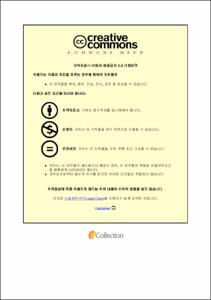CO2 상변화를 고려한 압력제어밸브 모델링
- Alternative Title
- Modeling of pressure control valve considering to phase change of CO2
- Abstract
- Recently, industrial system using natural refrigerants have been researched. Among them, carbon dioxide has a small pressure ratio compared to existing refrigeration systems because it has a relatively high operating pressure. And the effect of pressure loss on the performance of the system is small compared to other systems. Also it is eco-friendly because the global warming potential is low.
The pressure control valve is used in all parts of refrigeration and air-conditioning cycle (when fluid state is gas, liquid and two-phase states.). However the analysis model of the pressure control valve for CO2 refrigerant, which was previously developed, has the disadvantage of being able to be analyzed only when it is in the gas state. Therefore, in this study, the analysis model of pressure control valve for CO2 refrigerant was developed considering phase change to supplement for the shortcomings of the analysis model developed previously.
This paper is composed of 5 chapters, and the summary of each chapter is as follows.
In Chapter 2, it was to describes refrigerant properties and the density equation, mass flow equation, etc. used in the analysis model considering phase change. The shape and structure of the pressure control valve, which is used in this study, are also shown through a sectional view. Also fluid flow and operating principles within the valve were described and mathematical modeling was performed to analyze the dynamic behavior.
In Chapter 3, the components inside the valve were shaped by considering the structure, flow path and shape of the pressure control valve described in Chapter 2, and the analysis model was developed setting considering operating principles the parameters of each component. In particular, this analysis model used the Helmholtz free energy equation to take into account the properties of the actual CO2. This analysis model was simulated to test whether phase change was considered. As the result, it was analyzed refrigerant properties and dynamic behavior.
In Chapter 4, experiments were conducted to verify simulation models developed in Chapter 3, and experiments were conducted with dry air using compressors. The test was conducted by adjusting the pressure on the inlet and outlet sides of the pressure control valve to the proportional pressure control valve. To compare the results of the experiment with the analysis model, simulations were conducted with the same experimental conditions. As a result, it was compared results of experiment and simulation.
- Issued Date
- 2020
- Awarded Date
- 2020. 2
- Type
- Dissertation
- Publisher
- 부경대학교
- Affiliation
- 부경대학교 대학원
- Department
- 대학원 기계시스템공학과
- Advisor
- 장지성
- Table Of Contents
- 제 1 장 서 론 1
1.1 연구 배경 1
1.2 연구 목적 및 연구 방법 3
제 2 장 압력제어밸브의 모델링 4
2.1 이론적 배경 4
2.1.1 냉매특성 4
2.1.2 밀도 방정식 5
2.1.3 질량유량 방정식 8
2.2 압력제어밸브의 형상 및 구조 11
2.2.1 압력제어밸브의 구조 11
2.2.2 압력제어밸브의 작동 원리 12
2.3 수학적 모델링 14
2.3.1 운동 방정식 14
2.3.2 압력 방정식 16
2.3.3 온도 방정식 17
제 3 장 시뮬레이션 18
3.1 연구개요 18
3.2 압력제어밸브의 시뮬레이션 모델 19
3.3 유체 상태에 따른 시뮬레이션 22
3.3.1 시뮬레이션 조건 22
3.3.2 시뮬레이션 결과 23
3.3.3 기체를 이용한 해석 모델과 비교 25
제 4 장 실험 및 시뮬레이션 모델 보정 29
4.1 연구개요 29
4.2 실험 장치 29
4.3 실험 방법 및 조건 32
4.4 실험 및 시뮬레이션 결과 비교 33
제 5 장 결 론 36
참고 문헌 38
- Degree
- Master
- Files in This Item:
-
-
Download
 CO2 상변화를 고려한 압력제어밸브 모델링.pdf
기타 데이터 / 2.79 MB / Adobe PDF
CO2 상변화를 고려한 압력제어밸브 모델링.pdf
기타 데이터 / 2.79 MB / Adobe PDF
-
Items in Repository are protected by copyright, with all rights reserved, unless otherwise indicated.